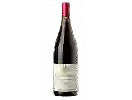
Cave du VendômoisTrésors d'Antan Pinot Blanc Vrai
This wine generally goes well with rich fish (salmon, tuna etc) and shellfish.
The Trésors d'Antan Pinot Blanc Vrai of the Cave du Vendômois is in the top 30 of wines of Loire Valley.
Food and wine pairings with Trésors d'Antan Pinot Blanc Vrai
Pairings that work perfectly with Trésors d'Antan Pinot Blanc Vrai
Original food and wine pairings with Trésors d'Antan Pinot Blanc Vrai
The Trésors d'Antan Pinot Blanc Vrai of Cave du Vendômois matches generally quite well with dishes of rich fish (salmon, tuna etc) or shellfish such as recipes of spinach, goat cheese and salmon quiche or sublime fish and shrimp colombo.
Details and technical informations about Cave du Vendômois's Trésors d'Antan Pinot Blanc Vrai.
Discover the grape variety: Pinot blanc
Pinot Blanc is a grape variety that originated in Burgundy, mutated from Pinot Gris. Today, it is grown in Alsace where it is called klevner when blended with auxerrois. The continental climate, with its cold winters and hot summers, is particularly suited to pinot blanc. It is resistant to frost in winter and in summer, the roots draw the minerals it needs from the warm soil. Its bunches are made up of small berries with thick skins and melting pulp that produce fruity, spicy wines, balanced between acidity and alcohol. pinot blanc is also used for crémants and sparkling wines. Pinot Blanc is also used for Crémant and sparkling wines. It is widely grown in Italy, where it covers almost 7,000 hectares, and is also found in Germany, Austria, Canada and South Africa.
Informations about the Cave du Vendômois
The Cave du Vendômois is one of of the world's great estates. It offers 30 wines for sale in the of Loire Valley to come and discover on site or to buy online.
The wine region of Loire Valley
The Loire Valley is a key wine region in western France. It follows the course of the Loire River on its Long journey through the heart of France, from the inland hills of the Auvergne to the plains of the French Atlantic coast near Nantes (Muscadet country). Important in terms of quantity and quality, the region produces large quantities (about 4 million h/l each year) of everyday wines, as well as some of France's greatest wines. Diversity is another of the region's major assets; the styles of wine produced here range from the light, tangy Muscadet to the Sweet, honeyed Bonnezeaux, the Sparkling whites of Vouvray and the juicy, Tannic reds of Chinon and Saumur.
The word of the wine: Farm
Wine dominated by a strong acidity and/or biting tannins. In this case, the components of the wine need to melt, i.e. to harmonize during the maturation in the cellar.














